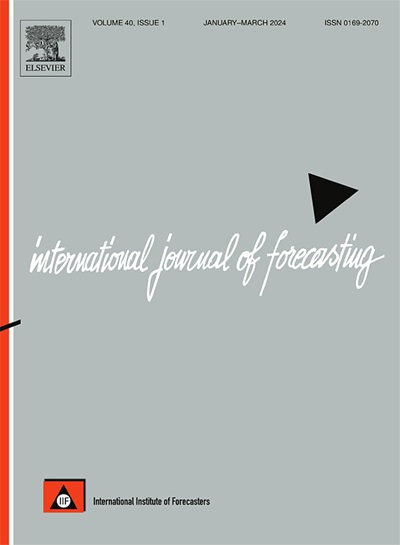设计具有超网络和对抗性组合的时间序列模型
IF 7.1
2区 经济学
Q1 ECONOMICS
引用次数: 0
摘要
本文介绍了在M6比赛的预测和投资挑战中分别获得第四名和第六名的方法,最终确保了两项全能总排名的第一名。在预测挑战中,我们测试了一种新的元学习模型,该模型利用超网络设计了一个针对特定预测任务的参数化模型。这种方法允许我们利用在单个预测任务(例如,资产)中观察到的相似性,同时也承认其数据生成过程中的潜在异质性。模型的训练可以直接通过反向传播进行,不需要依赖高阶导数,相当于同时搜索参数函数及其最优参数值的空间。该模型的功能超出M6,在正弦回归任务中优于最先进的元学习方法,并且在M4预测竞争中的时间序列上优于传统参数模型。在投资挑战中,我们根据当前排名调整投资组合权重,以诱导我们的提交与其他参与者的提交之间或大或小的相关性,旨在最大限度地提高获得好排名的可能性。虽然这种投资组合策略可以增加获得有利排名的可能性,但它自相矛盾地表现出负的预期回报。本文章由计算机程序翻译,如有差异,请以英文原文为准。
Designing time-series models with hypernetworks and adversarial portfolios
This article describes the methods that achieved fourth and sixth place in the forecasting and investment challenges, respectively, of the M6 competition, ultimately securing first place in the overall duathlon ranking. In the forecasting challenge, we tested a novel meta-learning model that utilizes hypernetworks to design a parametric model tailored to a specific family of forecasting tasks. This approach allowed us to leverage similarities observed across individual forecasting tasks (i.e., assets) while also acknowledging potential heterogeneity in their data generating processes. The model’s training can be directly performed with backpropagation, eliminating the need to rely on higher-order derivatives, and is equivalent to a simultaneous search over the space of parametric functions and their optimal parameter values. The proposed model’s capabilities extend beyond M6, demonstrating superiority over state-of-the-art meta-learning methods in the sinusoidal regression task and outperforming conventional parametric models on time series from the M4 forecasting competition. In the investment challenge, we adjusted portfolio weights to induce greater or smaller correlation between our submission and that of other participants, depending on the current ranking, aiming to maximize the probability of achieving a good rank. While this portfolio strategy can increase the probability of securing a favorable rank, it paradoxically exhibits negative expected returns.
求助全文
通过发布文献求助,成功后即可免费获取论文全文。
去求助
来源期刊

International Journal of Forecasting
Multiple-
CiteScore
17.10
自引率
11.40%
发文量
189
审稿时长
77 days
期刊介绍:
The International Journal of Forecasting is a leading journal in its field that publishes high quality refereed papers. It aims to bridge the gap between theory and practice, making forecasting useful and relevant for decision and policy makers. The journal places strong emphasis on empirical studies, evaluation activities, implementation research, and improving the practice of forecasting. It welcomes various points of view and encourages debate to find solutions to field-related problems. The journal is the official publication of the International Institute of Forecasters (IIF) and is indexed in Sociological Abstracts, Journal of Economic Literature, Statistical Theory and Method Abstracts, INSPEC, Current Contents, UMI Data Courier, RePEc, Academic Journal Guide, CIS, IAOR, and Social Sciences Citation Index.
 求助内容:
求助内容: 应助结果提醒方式:
应助结果提醒方式:


